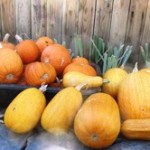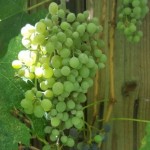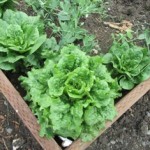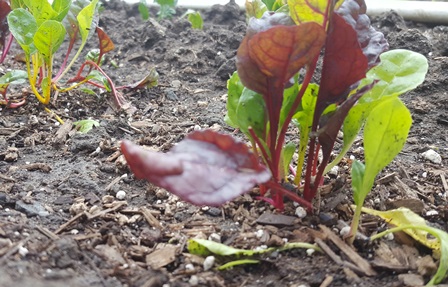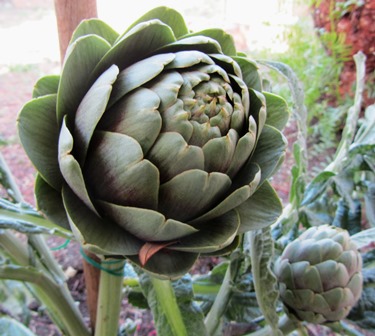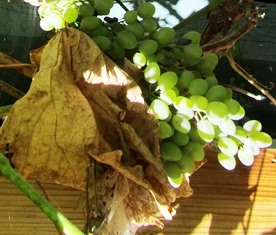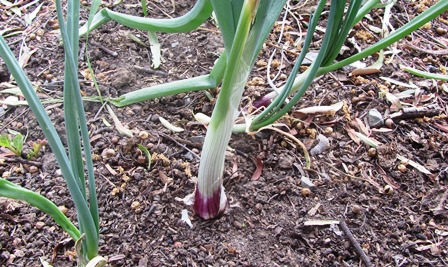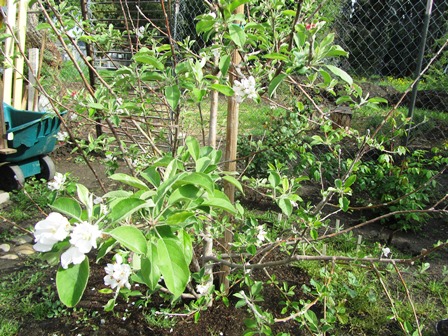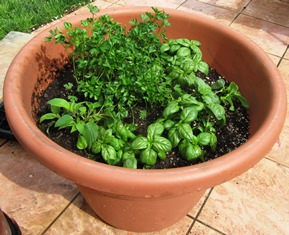The Summer Garden Is Done, What’s Next?
My summer garden is wild and chaotic and bountiful at the beginning of the season. You’ll find fruit trees, vegetables, vines of melons, corn, and perennial lavender and other showy herbs and flowers. Like a grand dame of faded elegance, the garden has matured and looks a bit weary and spent now that Labor Day approaches.
Just because the peak growing season is coming to an end, it’s not the end of garden chores. The following tasks can be started now.
HARVEST AND STORE
For some crops, the harvesting goes on. Examples include tomatoes, potatoes, melons, and winter squashes like Butternut that store well. If you haven’t already harvested the garlic, it’s a good time to do that.
Cut sunflower seed heads and place them in a warm area to dry. Collect seeds from cosmos, nasturtiums, and other flowers to preserve for next year’s garden. Work out storage options, especially for food items to be harvested.
Snip summer table grapes and other varieties if they are ripe . . . or let them hang a while longer for extra sweetness.
CLEAR BEDS
Depleted, dying, or dried annuals can be dug, pulled, and composted now. If you plan to let the garden rest, plant a cover crop so the ground doesn’t become hard scrabble. The cover crop will feed the soil.
DO FALL PLANTING
If you intend to do a fall planting, take time now to enrich the earth with amendments. Turn and rake the garden soil. Put plants directly into the prepared earth and water well to get them off to a good start.
For quick second crop before the weather turns cold, plant greens such as spinach, kale, and arugula. Cool season crops like beets, broccoli, and cabbage can go directly into the ground now, too.
CUT FLOWER AND SEED HEADS
Cut flower heads of hydrangeas for drying. Insert plant markers near peonies and other perennials that will die completely back during winter. Gather bunches of mint and other herbs, tie with string, an hang in a cool, dark place to dry.
CREATE MULCH
Designate an area to create a new compost pile. Use garden detritus and fall leaves as the trees begin to drop their canopies to enter winter dormancy. The resulting mulch will enrich the soil for next year’s garden.
CHECK ON FALL PRODUCE
Pomegranates, persimmons, and pumpkins will soon be ripening. Ensure that these plants continue to get water. Check for pests and any signs that might indicate nutrient deficiencies that could show up in the leaves. Figure out your options for storing or gifting excess fruits and veggies. For example, pomegranates keep well in the fridge or remove the seeds and put into bags for freezing. Save and dry rinds for potpourri.
TURN THE SOIL IN GROW BOXES
Aerate and amend soil in grow boxes and raised beds for cool season crops. Do these chores before the rainy season and cool weather arrives. Your garden, like a young maiden who flourishes from attention, will produce bountiful vegetables, fruits, berries, and flowers during its next growing season.
_______________________________________________________________
If you enjoy reading about farmette topics, gardening, and keeping chickens and honeybees, check out my series of cozy mysteries from Kensington Publishing in New York.
Click on this link: http://tinyurl.com/ya5vhhpm
My newest nonfiction book is published by Adams Media/Simon & Schuster: http://tinyurl.com/y9vfw2t9
- Anyone can find peace, clarity, and focus…all it takes is a moment
Grow Seasonal Greens Now
The cool season of spring is the optimum time to grow seasonal greens for salads and healthy blended shakes. In my kitchen garden, I’ve planted a variety of lettuces, spinach, kale, and chard. Most salad greens are easy to grow also in containers, raised beds, and window boxes when gardening space is limited.
Add compost and aged chicken manure to enrich the soil with nitrogen. Plant heirloom seeds about 1/2 inch in the soil, cover, and water. Within a week or 10 days, you should see the seedlings pop up. The greens will be ready to pick in about 25 days.
Water the plants to keep them hydrated but don’t drown the plants. When you are ready to make a salad, snip the leaves you want with kitchen scissors. New leaves will soon form if the roots are not disturbed and the plant continues to get nutrients and water.
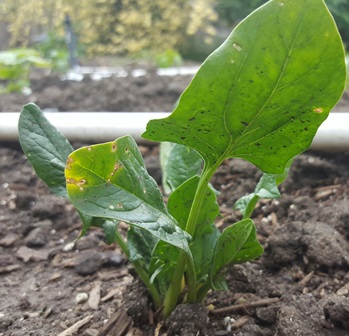
Spinach can be started in seed cell flats and then transplanted into your garden when all danger of frost has passed
SALAD OF FRESH GREENS
1. Snip a variety of greens in the early morning. Wash and thoroughly dry the leaves.
2. Place them in a bowl and crumble on some sharp cheese such as your favorite goat cheese or a Gargonzola (blue-veined, sharp tasting, and crumbly).
3. Add 1/2 cup sugared or candied walnuts.
4. Add some slice red onion and a handful of dried cranberries or chopped dried apricots.
5. Drop into the bowl some slices of a pear such as Bosc (considered the prince of pears).
6. Gently toss the salad and then spritz with red wine vinaigrette prior to plating on pretty salad serving dishes.
* * *
If you love reading about gardening and other farming topics, check out my Henny Penny Farmette series of cozy mysteries that include A BEELINE TO MURDER, THE MURDER OF A QUEEN BEE, and A HIVE OF HOMICIDES.
-
Delicious recipes
-
Farm quips and quotes
-
Tips for gardening and keeping chickens and bees
-
An exciting whodunnit mystery
Growing Your Own Superfoods
Nutrient-rich fruits, vegetables, and berries are not difficult to grow. Some can even be grown in containers on a sunny patio. My favorite superfoods include blueberries, strawberries, raspberries, and blackberries as well as artichokes, assorted leafy greens, and figs. But in general, superfoods are those foods rich in nutrients, vitamins, fiber, antioxidants, and/or omega-3 and omega-6 fatty acids.

The dark purplish color is characteristic of the brown turkey fig, and this tree needs a lot of space in the garden
On the farmette, I’ve planted several fig trees that are semi-dwarf and include White Genoa, Brown Turkey, and Mission varieties. These trees produce two crops each year–one in spring and the other in the fall. The fruits can be dried or eaten fresh and contain omega-3 and omega-6 fatty acids and phenol for the prevention and treatment of coronary heart disease.
I’ve planted raised beds of strawberries, including Albion, a variety that produces berries from June to October, and Sequoia, a dependable berry that produces fruit from June to early frost.
In half barrels, I’ve amended soil and planted thornless raspberries and blackberries. I like growing them in containers with trellis support because otherwise they spread all over any area of the garden where they’re planted.
We planted one artichoke a couple of years ago. It dies back in late fall only to return in the spring as a new plant with shoots containing the small chokes. Artichokes are low in calories and aid in the lowering of cholesterol because of specific compounds found in the edible parts of the plant.
Early in the spring when I put in my sweet garden peas, I also plant leafy greens such as kale, collards, lettuces, and spinach. Some of these come back the next year after their growing season is over.
Blueberries are easy to grow when you remember to plant them in acid soil. These berries are considered a superior brain food. They are low in calories (84 calories per cup) and provide about 24 percent of the suggested daily amount of Vitamin C that the body needs.
Except for the fig trees and the artichokes that do better in areas of the garden where they have plenty of space to spread, the other nutrient-rich foods mentioned can all be planted and raised in containers. It’s so easy to grow most of these plants, why not give it a try.
Gardening Tasks for Late Autumn
Falling leaves, shorter days, and colder weather signal that winter is around the corner. With roughly a month left before winter officially begins, there are plenty of tasks for the home gardener. Don’t put away your boots, buckets, gloves, trowel, and spade just yet.
If you grow grapes and raspberries or blackberries, now would be the time to prune those back before mulching with compost, leaves, or sawdust. Composting suppresses weed growth.
Pick and pumpkins, apples, and winter squash. Store them in a dry area at temperature of about 50 degrees Fahrenheit.
Rhubarb plants can be divided now. Make sure there’s an eye on each new plant and tuck into rich soil and mulch.
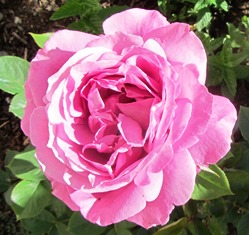
This candy-stripe rose requires a good pruning in the fall to generate a large bush with beautiful blooms in the spring
Remove leaves and prune back roses to 12 to 18 inches. Add some bone meal to the base of the bush and work into the soil.
Plant bulbs that will flower in the spring such as daffodils, tulips, hyacinth, crocus, and scillas.
Prepare a bed for onion seedlings or sets and plant them now for spring harvesting.
Fill bird feeders, hang a warming light in your hen house for the freezing nights ahead, and put blankets around your bee hives.
Transfer potted mums into garden soil. Most are perennials and will return year after year.
Plant kale, ornamental cabbage, and winter-hardy plants such as pansies in the garden or window boxes for winter color.
Move cold-sensitive houseplants indoors.
Tis the time for Cool Season Planting
If you love the cool season plants like lettuce, spinach, kale, onions, leeks, sugar snap peas, and artichokes, Valentine’s Day weekend is the time to start planting cool season crops in the Bay Area and other warmer climates.
I put in onions throughout the cool season and am rewarded with burlap bags of red onions, yellow, white, and the walla walla variety for kitchen soups and other culinary creations during the first months of the year.
My husband is building more growing boxes (4 x 4 x 3) in which we shovel amended soil, some planting mix, bone meal, blood meal, compost, and chicken manure. The soil will grow almost anything.
This weekend, we’re moving a couple of citrus trees and three rose bushes. I’ll feed and water and watch for the new shoots to show within a week or two if the weather stays warm. So, you see, Valentine’s Day isn’t just for lovers but also people who love to garden.
 Facebook
Facebook Goodreads
Goodreads LinkedIn
LinkedIn Meera Lester
Meera Lester Twitter
Twitter



